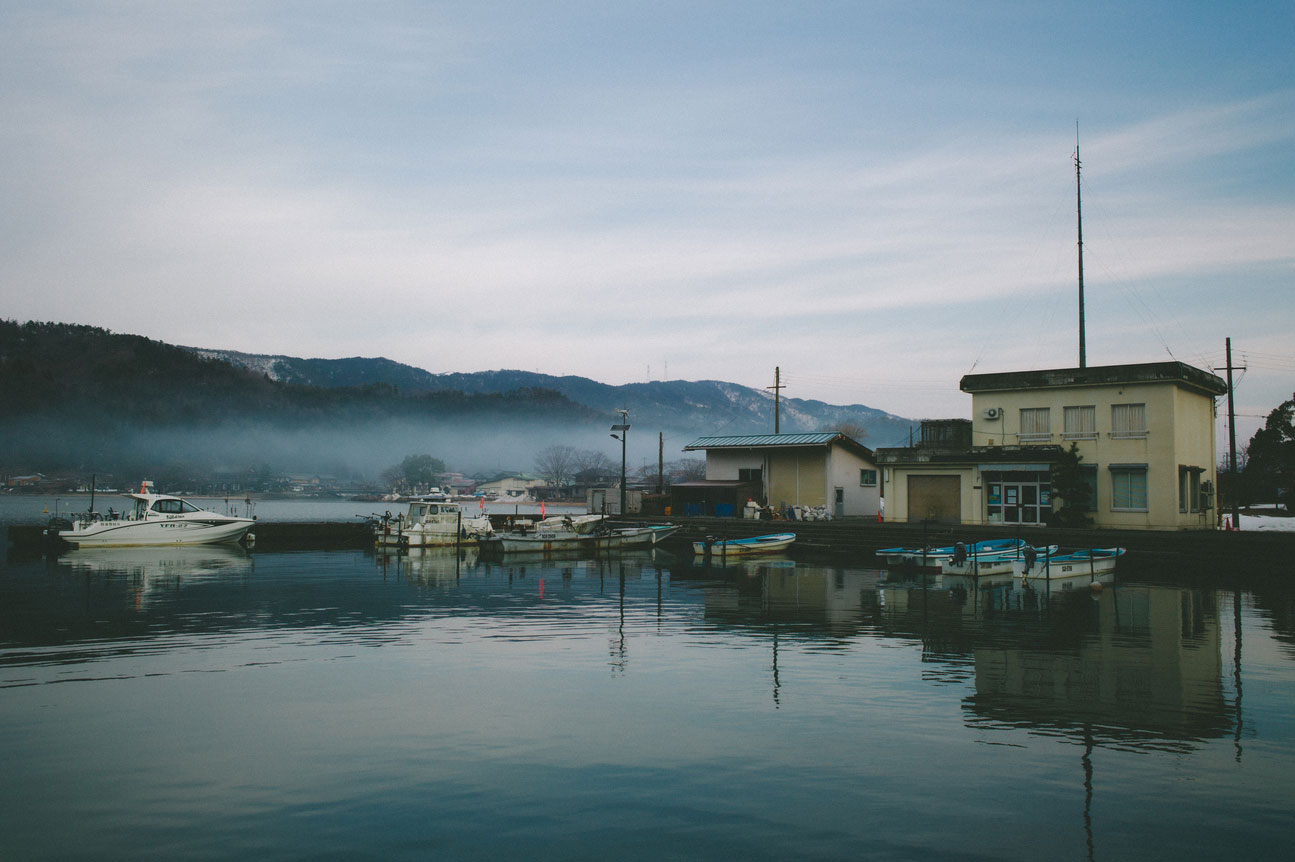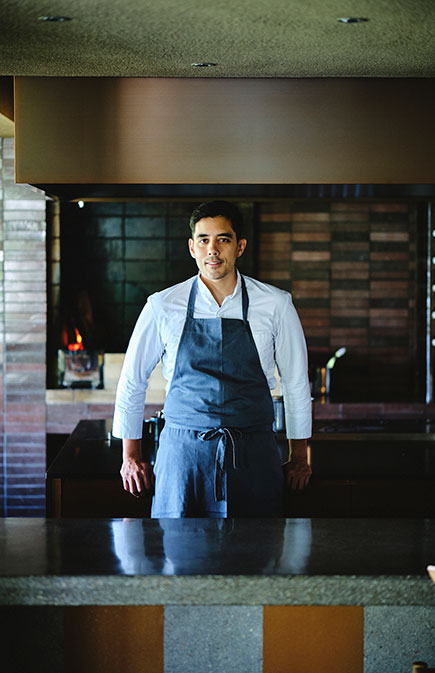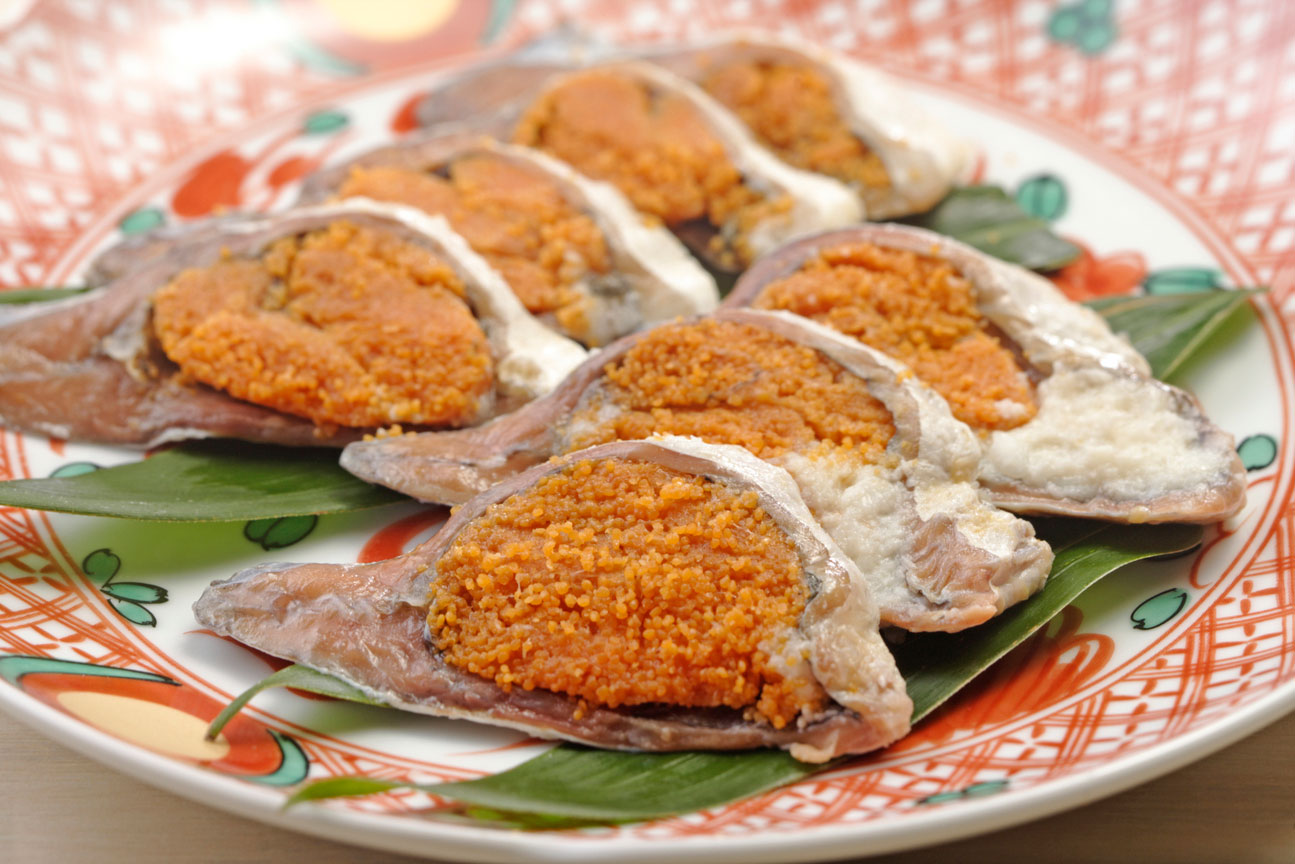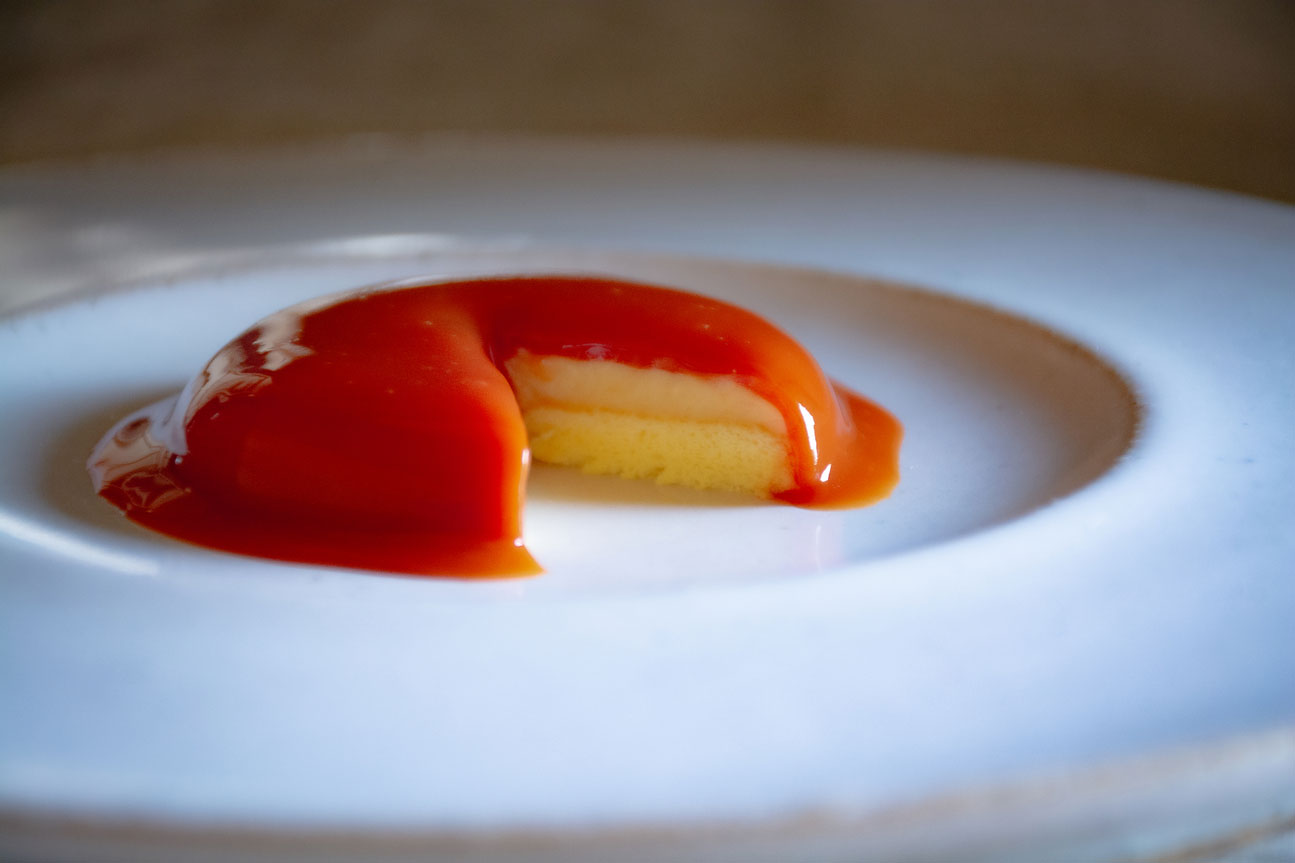
Kohoku Cuisine: A Countryside Celebration of Local Ingredients
Most visitors to Japan have likely passed through Shiga Prefecture on their way between Tokyo and Kyoto. Located just northeast of Kyoto, Shiga is best known for Lake Biwa, Japan’s oldest and largest freshwater lake, which covers an impressive one-sixth of the prefecture’s area. A long history of sustainable practices has fortunately preserved the heritage of the lake area’s forests, mountains, and waters. The lake’s resources and the landlocked position have fostered a unique food culture, including a variety of fermented specialties.

The people living around Lake Biwa, Japan’s largest and oldest, have developed a unique interconnected system incorporating the lake waters and the surrounding area.
Recently, the Lake Biwa area has also gained attention for an innovative local lakefront restaurant. Sower, features American born Chef Coleman Griffin’s unique terroir-driven menu, applying his experience at Michelin-starred restaurants to blend historical traditions with fresh local ingredients from the region’s top producers.
Chef Griffin originally arrived at L’Hotel du Lac (a charming auberge offering personal cottages, hotel suites, and beautiful Lake Biwa views) prior to Sower’s renewal. “I originally came to Japan to work at the Noma-affiliated restaurant Inua in Tokyo,” Griffin says. “When it closed due to Covid, my fiancée and I decided to stay in Japan. We came to L’Hotel du Lac, were inspired by the space and natural surroundings, and were introduced to the local ingredients and cuisine. It seemed like a perfect next step.” Together, they worked closely with acclaimed designer Teruhiro Yanagihara to envision the new space. By using local materials and skilled craftsman, its design strikes a balance between tradition and innovation.

Sower restaurant Chef Coleman Griffin brought his experience from northern Californian Michelin-starred restaurants and Tokyo’s Noma-affiliated Inua to the shores of Lake Biwa, where he serves Kohoku Cuisine.

Sower is located in the L’hotel du Lac, an auberge with rooms that overlook the broad expanse of Lake Biwa.
The lake and its surroundings form the core of the Lake Biwa System, an interconnected scheme involving local fishing, agriculture, and forestry activities linked to the food culture. Recognized as a Globally Important Agricultural Heritage System by the United Nations, this system includes sustainable practices such as the thousand-year-old “eri” fishing method, which maximizes the use of limited resources.

The fixed net method called “eri fishing” is a sustainable practice that leads fish into a maze from which they cannot escape, and has been used here for at least 1,500 years.
Another illustration of the connectivity of the system, for example, is the way the nearby rice paddies are used to help cultivate a species of lake fish. In spring, adult fish migrate from the lake to the water-filled paddies to lay their eggs, and the plankton-rich paddies promote the fish’s growth before their return to the lake in autumn. The system also features the planting of trees to reduce erosion, and environmentally conscious farming methods that result in a rich food culture, such as a tradition of fermented ingredients.

Winter fish on the menu at Sower include (from top) dace, smelt, willow gudgeon, mottle sculpin and ice goby.
“We honor area traditions by serving a lot of fermented dishes on our menu that add richness and depth to the food,” says Griffin. “There are many layers and nuances to the traditions of the area, but the most well-known local dish is funazushi, fermented crustacean carp salted and packed in rice. It is one of the oldest kinds of sushi, yet is very different from the sushi most Westerners are familiar with.”

The dish the area is famous for: funazushi is fermented crustacean carp that has been salted and packed in rice. (PHOTO: AFLO)
“Saba (mackeral) sushi is another fermented delicacy,” says Griffin. “It developed as a way to transport the catch from the Fukui coast across Shiga prefecture and on to Kyoto. It became so famous, a road—the Saba Kaido (highway)—was named after it. Even today, there are many shops selling sabazushi here.”
Griffin refers to the style of food served at the Sower restaurant as “Kohoku Cuisine,” a nod to the local region. Kohoku traditionally refers to the area north part of Lake Biwa, meaning the rich food culture benefits from both the lake and the resources of Mt. Ibuki. “Although many people aren’t aware of the name, we wanted something that clearly represents what we’re doing,” says Griffin. “Our goal is to showcase local gastronomy and offer a dining experience that’s distinct from what you might find in Tokyo.”
The restaurant’s location was a major draw for Griffin. Situated 30 minutes from the sea, facing a lake, and surrounded by rice fields with mountains in the background, it provides a rich variety of local ingredients. “We are able to get the sansai mountain vegetables,” Griffin notes. “Our rice is Inochi no Ichi, a local variety. We purchase our fish at a local shop, but often take a bucket down to the lake to catch live fish for our guests. Hunters share their freshly caught game with us and discuss how it should be aged. Everything is very near.”

A selection of sansai (mountain vegetables) offered in the spring at Sower includes watercress and wasabi leaf.

Inochi no ichi is the brand of rice preferred at Sower, as it is produced with low pesticides in consideration of the Lake Biwa environment.
An example of the immediacy of Sower’s ingredients is a current vegetable course featuring local produce from start to finish. Thinly sliced zucchini is grilled in a hoba (magnolia) leaf picked from the hotel’s property. Griffin describes the dish: “As it’s grilled, the sap of the leaf smokes, and becomes very aromatic,” he says. “In the base of the accompanying bowl is a sabayon. We roast whole zucchinis, scrape out the seeds, puree and fold them into whipped egg yolks. Lining the bowl is a furikake made by roasting lake fish, drying them and grinding them into a powder, which is then mixed with sesame, konbu, brown sugar and simple seasoning. It’s a little creative but has familiarity.”

The Sower vegetable dish—sliced zucchini in hoba leaf—served with an accompanying sabayon.
A desert selection offers a different take on a carrot cake. “We made a thin chiffon cake, and topped it with a cream made using a local cow’s milk cheese from this prefecture. The glaze is reduced carrot juice made from a local farm’s carrots that had been in the ground all winter. They are so sweet we don’t have to add any sugar.”

The Sower take on “carrot cake” is made with the juice of winter carrots.
To go with the innovative menu, Sower also offers a range of local sakes, Japanese and foreign wines, ciders, and beers. “We’ve visited many sake breweries,” Griffin says, “not just focusing on the brand but on quality and how well it complements our menu.” Guests receive a map of Lake Biwa, highlighting the locations of many of the local producers supplying the restaurant.
Has Griffin’s time at Sower changed his approach to food and cooking? “Definitely,” he says. “Using local products allows for a deeper connection. It’s not just about knowing where a carrot came from but who sold it to you. That’s the real joy of being part of the community.” He adds that the quality of Kohoku ingredients—fish, rice, game—has been remarkable. “As a chef, I’m always searching for reference points. The more you taste, the larger your memory bank of flavors becomes. I’ve gained more respect for what we eat through experiences like catching fish and eating freshly hunted game. I might not have had those if I were still in California or Tokyo.”
For visitors wanting to explore beyond the Tokyo-Kyoto corridor and challenge new locations and tastes, Griffin recommends trying the Lake Biwa area’s local dishes, particularly funazushi. “It has a strong flavor and aroma, somewhat like sour cheese,” he says. It’s a taste the area is proud of, reflecting its history and traditions, and is a starting point for those interested in learning more about Lake Biwa and its fascinating food culture.






